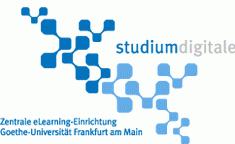Das Getty Research Institute in Los Angeles – vielleicht als das Äquivalent zu Foto Marburg in den USA zu bezeichnen – veranstaltet ein interessantes Symposium. Unsere Seminarthemen werden thematisiert: die Neutralität der Reproduktionsmedien für die kunstwissenschaftliche Forschung wird in Frage gestellt. Digitale Reproduktionen – wird in der Ankündigung beschrieben – scheinen den Originalen in ihrer ‚Wahrhaftigkeit‘ näher zu kommen. Die Neutralität der Fotografie, analog wie digital, sei längst dekonstruiert, wohingegen das Archiv kurioserweise meist weiterhin als neutraler Bewahrungsort für Geschichte gilt.
Auch das Kunsthistorische Institut in Florenz ist beteiligt.
Hier die Programmankündigung.
Hier der Programmtext:
Los Angeles, Getty Research Institute/The Huntington, February 25 – 26,
2016
Photo Archives V. The Paradigm of Objectivity
Photographic reproductions of works of art and other research objects have long been considered neutral documents capable of supporting the research methodologies of art history and related disciplines. The introduction of digital imaging saw the adoption of the same model, in that digital copies were presumed closer to the originals.
Today, the neutrality of photography has been deconstructed; nevertheless, the rhetoric of objectivity continues to shape the uses of analog and digital photographs, which are deemed „evidence“ even if one is aware of the possibility of technical manipulation and the influence of social conventions. Similarly, there is little awareness that archives are far from neutral guardians of memory.
This symposium explores the relationships among photographic reproduction technologies, archival practices, and concepts of objectivity, with an interdisciplinary outlook and a focus on art history. It is part of the Photo Archives conference series, launched by the Kunsthistorisches Institut in Florenz, Max-Planck-Institut, and dedicated to the interaction between photography, photographic archives and academic disciplines.
Organization: Anne Blecksmith (The Huntington), Costanza Caraffa
(Kunsthistorisches Institut in Florenz – Max-Planck-Institut), and Tracey Schuster (Getty Research Institute).


